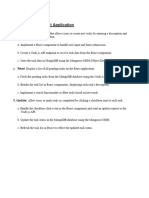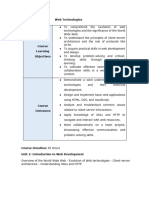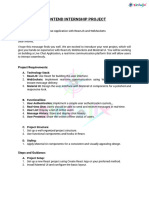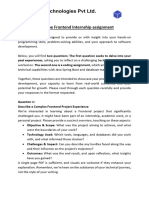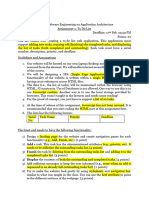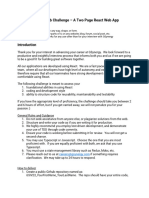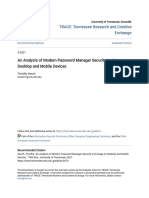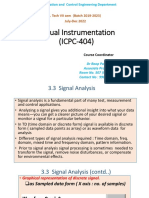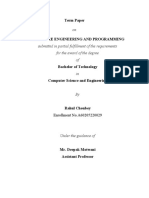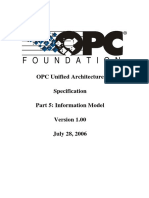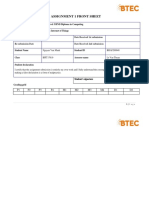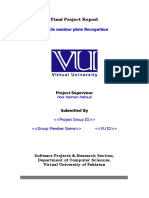0% found this document useful (0 votes)
13 views3 pagesFrontend Developer Intern Tasks
The document outlines two tasks: creating a real-time collaborative text editor and developing a component library SDK. The editor must allow multiple users to edit simultaneously, display changes instantly, and identify users, while the component library should focus on reusability and clean code without external libraries. Deliverables include a GitHub repository, live demo, README files, and a video explanation for both tasks.
Uploaded by
Dhruv TakkarCopyright
© © All Rights Reserved
We take content rights seriously. If you suspect this is your content, claim it here.
Available Formats
Download as PDF, TXT or read online on Scribd
0% found this document useful (0 votes)
13 views3 pagesFrontend Developer Intern Tasks
The document outlines two tasks: creating a real-time collaborative text editor and developing a component library SDK. The editor must allow multiple users to edit simultaneously, display changes instantly, and identify users, while the component library should focus on reusability and clean code without external libraries. Deliverables include a GitHub repository, live demo, README files, and a video explanation for both tasks.
Uploaded by
Dhruv TakkarCopyright
© © All Rights Reserved
We take content rights seriously. If you suspect this is your content, claim it here.
Available Formats
Download as PDF, TXT or read online on Scribd
/ 3

